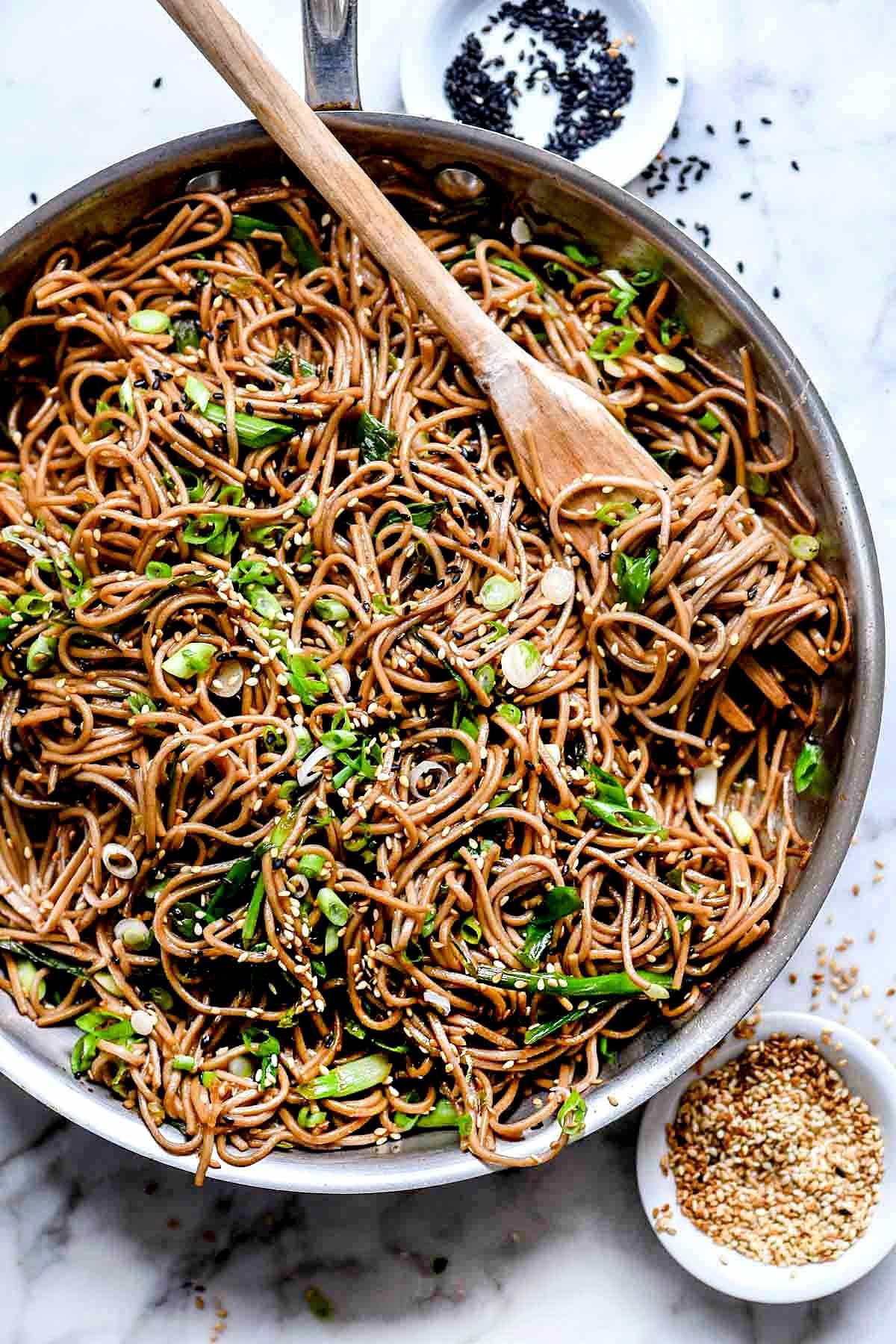
Are Soba Noodles Healthier for You Than Pasta?
Soba noodles, a Japanese alternative to pasta, are gluten-free and high in flavonoids, offering health benefits and blood sugar balance.
Soba noodles are mostly made with buckwheat flour, which is gluten-free and packed with proteins, vitamins, and minerals. This makes soba noodles a healthier option than regular pasta.
Buckwheat belongs to the Fagopyrum genus. We use two species, Fagopyrum esculentum and Fagopyrum tataricum, known as common buckwheat and Tartary buckwheat, for food.
Buckwheat plants have branching stalks with green leaves and produce small white flowers. The seeds or kernels are harvested for consumption, either whole or processed into flour.
Although buckwheat is not a true cereal grain, its nutrient composition closely resembles that of whole grains. It contains beneficial nutrients like resistant starch, proteins, B vitamins, magnesium, rutin, and flavonoids.
What nutrients do soba noodles contain?
Soba noodles are rich in nutrients essential for health, including resistant starch, proteins, B vitamins, magnesium, and rutin. They also contain a variety of flavonoids that promote well-being.
How do soba noodles compare to regular pasta?
Buckwheat, the main ingredient in soba noodles, is a whole grain, while white flour used in regular pasta is a refined grain with lower nutritional value. In general, soba noodles are a healthier choice than regular pasta.
When comparing the nutritional content of 100 grams of cooked soba noodles to unenriched pasta, soba noodles have less fat, carbohydrates, calcium, iron, magnesium, phosphorus, potassium, sodium, zinc, copper, and manganese.
Are soba noodles gluten-free?
Soba noodles made from 100% buckwheat flour are gluten-free, making them a suitable alternative for individuals with Celiac disease. However, some brands may include other flours that contain gluten, so it’s important to check the nutrition label.
Eating buckwheat-based products can benefit individuals with non-Celiac gluten sensitivities, as buckwheat can reduce gastrointestinal distress and help treat nutrient deficiencies.
Can you be allergic to soba noodles?
If you’re allergic to soba noodles, it’s likely due to an allergy to buckwheat, although buckwheat allergies are rare. Seek immediate medical attention if you experience difficulty breathing or anaphylaxis after consuming buckwheat or soba noodles.
QUESTION
Do buckwheat-based foods offer any health benefits?
Multiple studies support the health benefits of consuming buckwheat, thanks to its rich nutrient profile. Buckwheat can help prevent high blood pressure, obesity, heart disease, and gallstone formation. It may also aid in blood sugar balance and provide antioxidant and anti-inflammatory effects.
How many soba noodles should you eat?
Soba noodles made from 100% buckwheat flour are considered a whole grain. To achieve optimal health, incorporate whole grains like buckwheat into a balanced diet that includes fruits and vegetables.
Americans often consume enough grains overall but fall short on whole grains. The amount of whole grains needed daily varies based on factors like age, sex, weight, height, and physical activity level.
For instance, the U.S. Department of Agriculture recommends six to eight ounces of grains, with half coming from whole grains, for females aged 19 to 30 years old. Males in the same age range should aim for eight to 10 ounces, with four to five of these ounces from whole grains.
A half-cup portion of cooked soba noodles is equivalent to one ounce of grain. Therefore, consuming two cups of pasta provides two ounces of grains.
Conclusion
Incorporate whole grains, like buckwheat, along with a variety of fruits and vegetables, to achieve optimal health.


